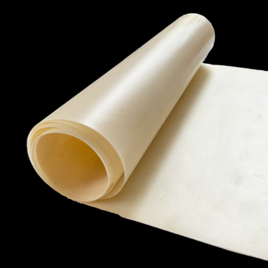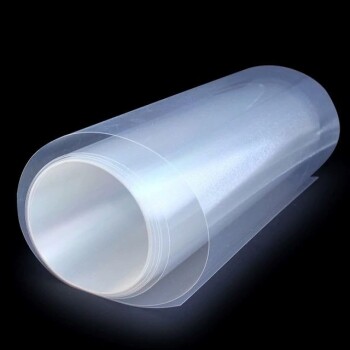
为什么选择我们
可靠的合作伙伴简易的订购流程、优质的产品和专业的支持,助力您的业务成功。
应用
阴离子交换膜(AEM)是半透膜,通常由离聚物制成,设计用于传导阴离子但拒绝氧气或氢气等气体。阴离子交换膜用于电解槽和燃料电池中,以分离两个电极周围存在的反应物,同时传输电池运行所需的阴离子。一个重要的例子是用于分离直接甲醇燃料电池(DMFC)或直接乙醇燃料电池(DEFC)电极的氢氧根阴离子交换膜。
- 在氯碱工业、水处理工业、重金属回收、湿法冶金和电化学工业领域;是分离装置、净化装置和电化学元件的重要组成部分。
- 在新兴电力转换装置中;作为液流储能电池、碱性阴离子交换膜燃料电池、新型超级电容器等的电池隔膜;所使用的阴离子交换膜不仅起到隔离氧化剂和还原剂的作用,还具有离子传导性。
细节与部件




技术规格
| 产品编号 | 厚度 | 可用尺寸 |
| A15-HCO3 | 15微米 | 5*5厘米;5*10厘米;10*10厘米;20*10厘米;20*20厘米;30*10厘米;30*15厘米 |
| A20-HCO3 | 32微米 | |
| A32-HCO3 | 40微米 | |
| A40-HCO3 | 60微米 | |
| A80-H29316 | 80微米 | |
| A15R-HCO3 | 15微米 | 5*7厘米;10*7厘米;14*10厘米;28.5*10厘米; |
| PiperlON A5 离聚物固体 | PiperlON-A5-HCO3 0.8克 | 1瓶/半瓶 |
| 厚度和单位面积质量 | 典型厚度(微米) | 单位面积质量(克/平方米) |
| A20-HCO3 | 20 | 22.6 |
| A40-HCO3 | 40 | 45.2 |
| A80-HCO3 | 80 | 90.4 |
| 物理性能 | 典型值 | |
| 拉伸强度(兆帕) | ||
| A20-HCO3 | >30 | |
| A40-HCO3 | >50 | |
| A80-HCO3 | >50 | |
| 杨氏模量 | ||
| A20-HCO3 | >30 | |
| A40-HCO3 | >50 | |
| A80-HCO3 | >50 | |
| 断裂伸长率(%) | ||
| A20-HCO3 | >20 | |
| A40-HCO3 | >60 | |
| A80-HC03 | >100 | |
| 比重 | 1.13 | |
| 其他性能 | ||
| IEC(毫克当量/克) | 2.35 | |
| 电导率(毫西门子·厘米OH80℃) | 150 | |
| 水解性能 | 典型值 |
| 溶胀率(%80℃ 1M KOH) | 8 |
| 吸水率(%80℃ 1M KOH) | 50 |
阴离子膜分散液(也称为离子膜溶液、离聚物溶液、离子导电剂离聚物等)是制造离子交换膜、膜电极和其他材料所需的材料。我们可以提供5%(重量百分比)的膜溶液。溶剂为乙醇,规格为20毫升。
优点
- 高离子选择渗透性
- 低电阻
- 高机械强度
- 优异的耐化学性
- 优异的尺寸稳定性
- 溶质和溶剂的扩散系数小
- 单价和多价离子的分离
FAQ
阴离子交换膜处理方法的一般步骤。
4.8
out of
5
KINTEK SOLUTION's Anion Exchange Membrane is an amazing product for lab use. It's very durable and has great chemical resistance.
4.7
out of
5
I'm very impressed with the quality of this Anion Exchange Membrane. It's well-made and has exceeded my expectations.
4.9
out of
5
The Anion Exchange Membrane from KINTEK SOLUTION is a great value for the price. It's very affordable and does a great job.
4.6
out of
5
I'm very happy with my purchase of the Anion Exchange Membrane. It arrived quickly and was packaged very well.
4.8
out of
5
The Anion Exchange Membrane is a great product. It's very easy to use and has made my lab work much easier.
4.9
out of
5
I highly recommend the Anion Exchange Membrane from KINTEK SOLUTION. It's a high-quality product that has met all of my needs.
4.7
out of
5
I'm very impressed with the performance of the Anion Exchange Membrane. It's very efficient and has helped me to get accurate results.
4.8
out of
5
The Anion Exchange Membrane is a great product for research purposes. It's very reliable and has helped me to get consistent results.
4.6
out of
5
I'm very happy with the Anion Exchange Membrane. It's very user-friendly and has made my lab work much more efficient.
4.7
out of
5
The Anion Exchange Membrane is a great investment. It's very durable and has saved me a lot of money in the long run.
4.9
out of
5
I highly recommend the Anion Exchange Membrane from KINTEK SOLUTION. It's a top-of-the-line product that has exceeded my expectations.
4.8
out of
5
The Anion Exchange Membrane is a must-have for any lab. It's very versatile and can be used for a variety of applications.
获取报价
我们的专业团队将在一个工作日内回复您。请随时与我们联系!
相关文章

H 型电解槽在金属提取中的应用
H 型电解槽使用电解质溶液溶解金属离子,并通过电流将金属离子从溶液中分离出来。

电化学研究中的旋转盘电极 (RDE) 综合指南
探索旋转盘电极 (RDE) 在电化学研究中的详细工作原理、应用和意义。了解 RDE 如何用于燃料电池、催化剂开发等。

活性炭再生在水处理中的重要性
在水处理中,活性炭通常被用来去除饮用水和废水中不需要的污染物,如氯、氯胺和有机物。

关于活性碳热再生技术的全部内容
活性炭再生简介、方法和选择

电化学电极的未来
电极材料的最新趋势和发展及其对未来电化学的影响。

电化学电极技术的创新
纳米技术和材料科学的最新进展极大地改进了电化学设备,使其更加高效、耐用和经济。

了解电解池:能量转换与应用
电化学电池 电化学电池是一种能够通过化学反应产生电能或通过引入电能促进化学反应的装置。

电解槽在净化和电镀中的应用
电解池是利用电能产生非自发氧化还原反应的化学池。这些电池用于各种电化学过程,如电解和电镀。

探索多功能电解槽水浴:应用与优势
了解多功能电解槽水浴在各行各业的广泛应用。了解它们的优点、组成以及如何促进化学反应和温度控制。

旋转电极法的优势
旋转电极法是通过旋转一个小型工作电极来增加反应物和生成物的质量传输,从而实现更精确的测量和更好的反应条件控制。

什么是等静压机
等静压成型是一种利用液体介质的不可压缩性和压力均匀传递的成型方法。它适用于各方向压力相等的粉末致密部件。其原理是在模具中注入水等液体介质,然后对模具施加均匀的压力。压力由活塞或柔性膜施加。

清洁的几何学:表面完整性如何决定电化学的成功
掌握电解池维护的艺术。了解分级清洁方案如何防止污染并确保实验的可重复性。


